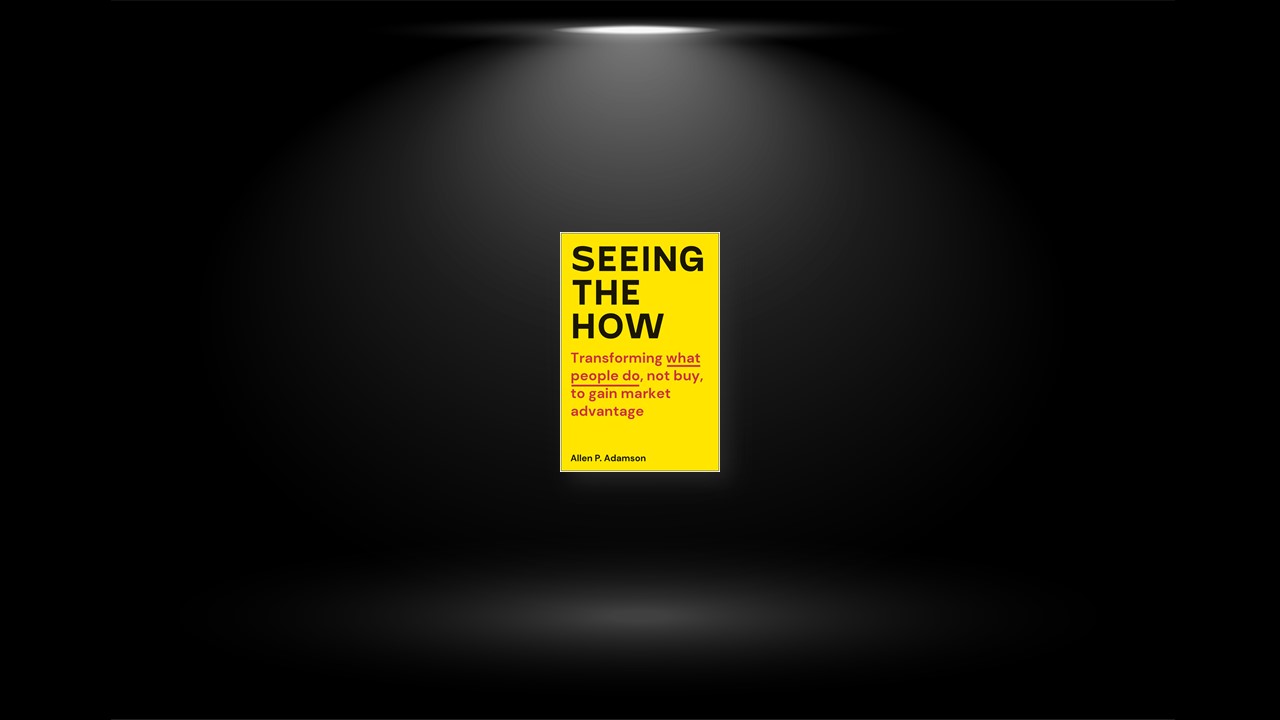Lens 1: Focus In & Drill Down
When you teach someone how to throw a baseball, you tell them to look where they want the ball to go, step toward where they want the ball to go, and then throw the ball where they want it to go. To the novice thrower, this can sound frustratingly uninstructive. So, too, is the simple complexity that is viewing your business in a way that narrows your perspective to one that can provide an experience that is specific, unique, and superior to all the others.
The strongest brands have a clear focus on what they do, what they want to stand for, and to whom they can provide it, and they offer what they do in the same way and with the same quality every time they do it. The clearer the focus, the stronger the brand. Companies that try to veer off the path—getting into what they consider collateral offerings—often get into trouble. Consumers are smart enough to question the connection.
A key factor in brand success is to concentrate on what you do and do it well. As New York Times columnist Tom Friedman once said to me in a conversation a few years back, “Average is over.” In this hyper-connected world, “good enough” is no longer enough. Taking this one step further, relative to seeing new opportunities, consider how to “unbundle” one particular dimension of an experience, and then become the expert in that area. This is a lens that has provided success to a number of market innovators.
And it often starts with standing up and moving from behind your desk, putting down your phone, and looking away from your screens. You have to exist in the world where you want to succeed. If you don’t know what it’s like to shop at a supermarket, you are unlikely to understand how to create an experience that will make your supermarket do something that no one else does.
Lens 2: Customize and Make It Personal
Distinct from zooming in, customizing is the lens that guides you to think about how you can take what you do and know best and make it specific to the region, type, or personality of your customers. Properly executed, customizing takes the best of both segmentation (intending your product for an identifiable group of customers—say, people with curly hair) and personalization (allowing the customer to provide enough personal information to help you create a product that speaks to them as an individual) to produce a differentiation that results in loyalty by providing precisely the right thing at the right time.
The concept of customizing is not a new one, of course. But with so much of it coming on the heels of recent technological advancement, it’s easy to forget that the idea of knowing your customer, identifying what they want and what they like, and delivering to them something they could make themselves has been around for some time. In a conversation with me, Bob Pittman, cofounder of MTV and current chairman and CEO of iHeartMedia, reminisced about the role radio played, and still plays for some, in what music people know about. In the days of yore, Casey Kasem would deliver his Top 40 every Sunday, and those songs would be the soundtrack of that week in much of the United States. Today, we have access to so much more music because of streaming services like Spotify, but that increased access can make it difficult to find your way to something new that you’ll like. “On Spotify, most of the usage is not people picking their own songs. It’s not people making their own playlist. It’s people listening to somebody else’s playlist because that someone else has done all the work.
There are loads of ways a company can take the boon that is a wealth of choice and respond to the fact that too much choice leads to an inability to enjoy anything. Spotify offers premade and shared playlists. Many large retail clothing stores offer a personal shopper. “It goes back to your time thing, in a time-crunch world with so many people screaming at you online and offline,” Pittman said. “If marketers could cut that noise out? They can win. It’s always about making it easy for me, making it simple. Curate my life for me? Yes, please—what would I give?”
Lens 3: Joining Forces
Joining forces is about building your audience exponentially to solve a bigger problem than what you alone can best address, creating an entirely new experience from the forces of two discrete organizations. Joining forces is not about branding. It is not about simply improving the service you already provide. This isn’t just getting Michael Jordan to sign a run of sneakers; that’s just the same product with a premium value attached.
Some partnerships make obvious sense. Starbucks plays music in its buildings; partnering with Spotify to promote artists and the music-streaming platform for the customers both organizations were already sharing only solidified and grew audiences for the two powerhouses. It created a new experience in which music discovery and sharing became an implicit part of sitting and enjoying a half-caf skinny latte with a caramel drizzle.
What about your business? Is there some aspect over which you command a level of understanding and quality of service that you might bring to another company in the name of improving your customers’ experience, expanding the number of people able to consume what you do and creating an entirely new experience from the merging of ideas?
In today’s world, some of the most important marketing tools are not those you pay for or place, or for which you decide the parameters. Instead, some of the most effective marketing is found in the words and images of social media where, as it is generally understood, no one shares the ordinary. Rather, we share, recommend, and create momentum toward that which is extraordinary. What can your company do to create an experience that is shareable? Where is the opportunity for your organization to join forces to create the extraordinary?
Lens 4: See Like a Concierge
The “see like a concierge” lens is about being that someone with the expertise and ability to listen and solve problems better and faster than the average person can on their own, even after hours of research. As with everything, there are different levels of what is generally called concierge service, the quality of which will, without a doubt, vary. This chapter is not a review site, so this isn’t about who, specifically, executes such service better. The author uses the word “concierge” because of its association with high-end hotels and properties and all of the expectations they inspire.
Concierge service is more than individualized service. It requires an informed person with the emotional intelligence to take an idea, question, or service through a logical progression that a customer might not have thought of, never mind expect. Concierge remains a valid service model, and this is especially true as younger generations are more open to identifying the assistance they need and looking for those who have the expertise to fill that need.
What constitutes the concierge experience? The good concierge uses all the fields of vision: tunnel, peripheral, and wrap-around—and does so knowingly. They ask and, more importantly, listen. They hear both what is said and, at times, what is notably left unsaid.
The conceit of a concierge is the removal of friction from a customer’s experience. A simple idea, right? Think about it at the most mundane level. How hard is it to find your product? Can you look it up online or find it on a shelf? If a purchase is dependent on someone who has no fealty to your specific brand or item, you are likely losing customers you never knew you could have. It’s not a matter of whether one person buys your product on a given day—a lifetime of purchasing may have already slipped through your fingers. A smooth buying experience today leads to a repeat purchase that becomes a habit tomorrow.
Lens 5: Go the Rental Route
There are so many moments, days, and stages of life that require things we will not need to own once that moment, day, or stage ends. There are hobbies that are best approached with temporary tools before a commitment to ownership is made. There are needs that arise once a year—and never more often—for which a space, a thing, or a service is required that immediately becomes a burden to own when the need goes away.
Hilti has disrupted the market for construction tools by shifting from a purchase- to a transaction/rental-based business model. It realized that its customers’ need is not just to own a reliable tool but to have the right tool at the right time. Hilti’s customers simply rent whatever tool they need, whenever they need it, rather than having to own every single tool they might possibly need in their personal stock.
How does one examine a preexisting corporate structure and look for ways to engage customers in this different way? Break down what you do and offer; see where a one-time sale can turn into a repeated, ephemeral engagement; and then maintain that relationship by understanding all the steps necessary to provide that service or tool, including how to present the options available, identify the segments of availability, offer choices within categories that speak to the range of needs customers might want (whether they know it or not), provide access to those choices and arrange for their return, and, most importantly, guarantee a working service or tool and make efficient the efforts needed to address when there is a breakdown of said service or tool.
The shift this offering makes in customer experience is profound. People simply don’t automatically assume that ownership is the first line of defense when addressing a need in their lives. For some, this is political. There is a movement to produce, have, and throw out less. For others, it’s about Marie Kondo–ing their lives, and renting allows them to reap the benefits of a product without needing to find a place for it in their home when they’re done. There are economic reasons. It is always going to cost less to rent something once than to buy it and use it once. And there are reasons that have to do with the speed with which improvements to tools are made. A company can do well to lease computers, knowing they will be used hard and well for two years and that they’ll be replaced at the point when their efficacy and ability to stay updated begins to decline.


